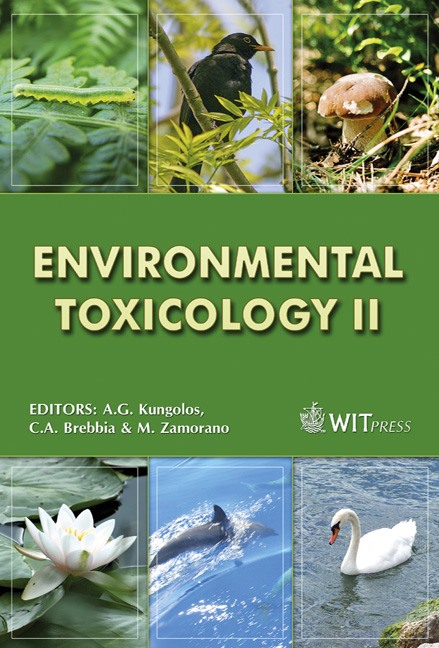Application Of Bioassays And Soil Column Test For Toxicity Evaluation Of Selected Pesticides
Price
Free (open access)
Transaction
Volume
110
Pages
8
Page Range
263 - 270
Published
2008
Size
276 kb
Paper DOI
10.2495/ETOX080281
Copyright
WIT Press
Author(s)
A. Kungolos, C. Emmanouil, M. Gkantaka, V. Tsiridis & N. Tsiropoulos
Abstract
The toxic effects of an organophosphate nematicide (Fosthiazate) and a benzenoid fungicide (Metalaxyl-M) have been evaluated by the use of the fresh water algae P. subcapitata. The effects of copper (Cu+2), an ingredient of many fungicidal mixtures, have also been assessed on the same organism, as well as the interactive effects of binary mixtures of the three aforementioned agrochemicals. Finally, leachates containing fosthiazate in two different concentrations have been tested on the bioluminescent bacterium Vibrio fischeri. The interactive effects of the binary mixtures were additive in most cases, while fosthiazate leachates exhibited low, dose-related toxicities. Keywords: interactive effects, algae, bioluminescence, bioassays, fungicides. 1 Introduction Agrochemicals are constantly used in high quantities in order to ensure enhanced crop yield and to decrease disease rates from various pests. Serious fungal pathogens in many cultivated plants may cause extensive damage and losses to agriculture and forestry, while plant parasitic nematodes which include several species may cause severe crop losses. Metalaxyl-M [the (-)-(R)-enantiomer of methyl-N-(2-methoxyacetyl)-N-(2,6-xylyl)-DL-alaninate] is the most widely known member of the phenylamide class of fungicides. It destroys the fungi by
Keywords
interactive effects, algae, bioluminescence, bioassays, fungicides.





